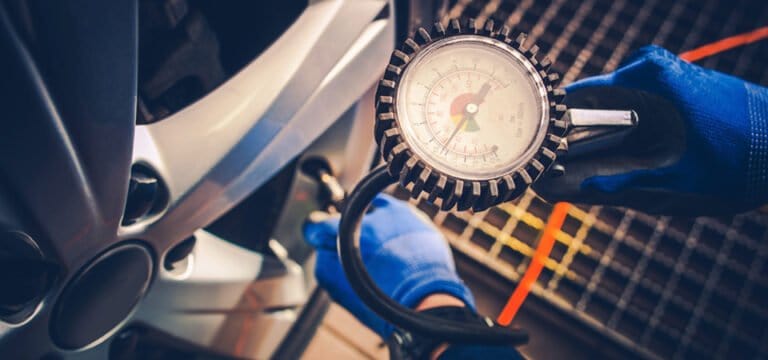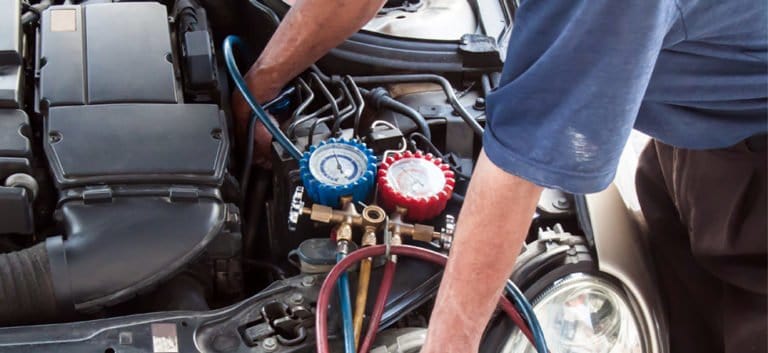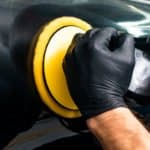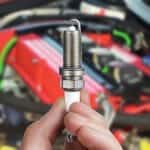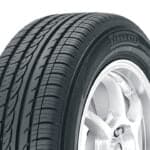Affiliate Disclosure: Some of the links in this post are affiliate links. As an Amazon Associate, we earn from qualifying purchases. Read more in our affiliate policy.
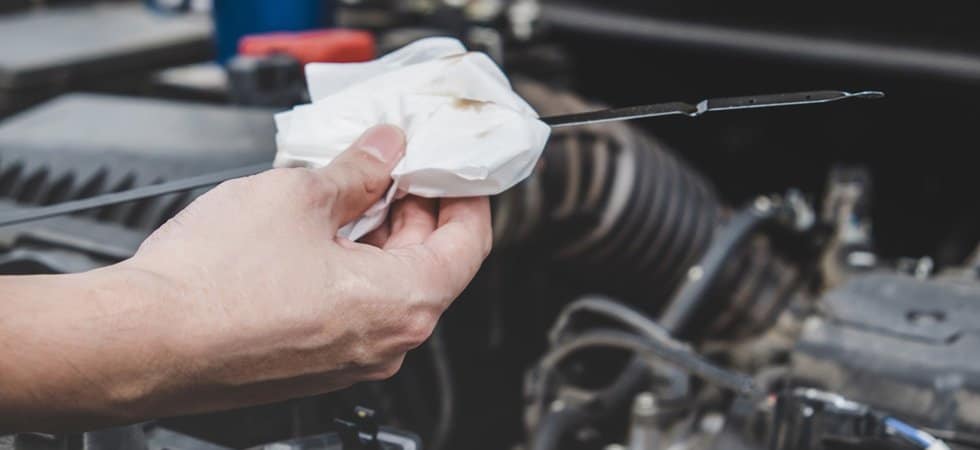
Overfilling Engine Oil – What To Do When There’s Too Much Oil in A Car?
Motor oil is absolutely necessary for your car – and the more you have it, the longer you may go without changes. With that said, everything has its limits – overfilling engine oil could cause detrimental effects in your car.
If you suspect that there is too much oil in your car engine, then you should take action immediately.
Below, you will learn why exactly excess oil is damaging to your engine, and we’ll also go through the steps that you need to take to troubleshoot and treat motor oil overfilling.
Too Much Oil in Car Engine – Is This Dangerous?
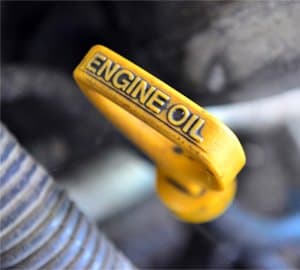
The oil keeps the engine’s internal components lubricated, preventing overheating and friction while the engine is up and running.
However, even after overfilling engine oil by 1 quart, you may face some serious issues with lubrication. This is because of the way engine lubrication works.
If you didn’t know, the oil reservoir (commonly called oil pan) is situated right below the engine. A pump draws oil to the top of the engine via a feed line. Then, the oil is directed into the crankshaft.
And as the crankshaft rotates, the oil is distributed to the cylinder walls, pistons, and other moving components of the engine.
If there is too much motor oil in the reservoir, the engine crankshaft may start making contact with its surface. The fast rotation of the crankshaft can aerate the oil, making it impossible for the pump to effectively guide it to the top of the crankshaft. This results in inadequate lubrication, oil starvation, overheating, and engine damage.
So although this process is really simple and easy to understand, if you don’t know how engines work, you may never even suspect that too much oil in a car can harm your engine. Well, the “max” indicator is there for a reason.
What Could Happen If There Is An Engine Oil Overfilling?
If you are wondering what could happen to your car’s engine after an oil overfill, then here’s what you may have to deal with:
- Clogging or damage to the catalytic converter.
- Dirty spark plugs (learn the bad spark plug signs here).
- If the oil flows into the exhaust pipe, then pressure could build up in the engine, causing it to overload or even explode in severe cases.
- Bended crankshaft and wrist due to lack of lubrication and increased friction.
- Insufficient cleaning and thus debris buildup in the engine.
- Overheating and engine failure.
Overfill Engine Oil Symptoms – The Common Signs Something’s Not Good
If you’ve been experiencing problems in your car, then it’s not necessarily the excessive amount of oil that is causing them. You need to check the symptoms to determine what may be wrong in your vehicle.
Here are overfill engine oil symptoms:
-
Oil leaks.
The excess oil could spill out of the oil pan during operation. With that said, an oil leak could also be a symptom of an issue elsewhere.
-
Smell of burning oil.
Typically, the smell of burning oil is a sign of low oil and overheating. However, if motor oil gets where it is not supposed to be, it can burn and emit a distinct smell as well.
-
Smoke from the engine compartment or exhaust.
If oil makes contact with heated parts, you may see blue-tinged smoke coming out of the vehicle.
-
Unusual behavior of the oil pressure gauge.
The oil gauge may jump around if you have oil overfill as well. This is because once the oil gets aerated, it won’t properly flow through the feed line, reducing the pressure inside it.
-
Loud engine noises.
Engine noises are non-specific, unfortunately – they could be caused by many other problems. But if they coincide with one or more previous symptoms, you likely have too much oil in the engine.
Unfortunately, even if your vehicle has these symptoms, there may not necessarily be too much oil in the car engine. Although in most cases, the simultaneous occurrence of these symptoms does imply an excess of motor oil.
But luckily, it’s actually pretty easy to check whether it’s indeed an oil overfill that you are dealing with.
How To Check For Engine Oil Overfill
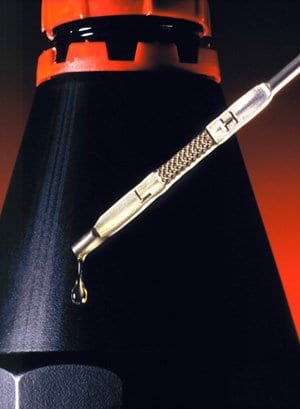
Here’s how it is done properly:
- Check your car’s manual to see whether it even has a dipstick. Some modern cars may have electronic oil motors instead.
- Some car manufacturers recommend to warm up the engine for 5-10 minutes before checking the dipstick. This may allow for a more precise reading.
- Park your car on level ground and wait until the engine cools down to avoid getting burns from hot engine parts.
- Open your car’s hood and locate the dipstick. It is usually situated on top of the oil tank and has a bright yellow ring. If you can’t find the dipstick, consult your car’s manual.
- Take the dipstick out and wipe it clean. This will remove traces of previous checkups.
- Insert the dipstick all the way back, hold it for a few seconds, and then pull it out again.
- Have a look at both sides of the dipstick and determine how high the oil reaches. Dipsticks have some kind of marking to indicate the proper oil level. If the oil has reached and exceeded the “max” marking on the dipstick, then the engine has 100% overfilled.
If your problem is indeed overfilling, then read on – we’ll provide you with a few solutions below. Otherwise, you will need to do additional troubleshooting to find where the problem lies. Issues other than excess motor oil are beyond the scope of this post.
What To Do If There Is Too Much Oil In Engine
There are two courses of action that you could take with an overfilled engine:
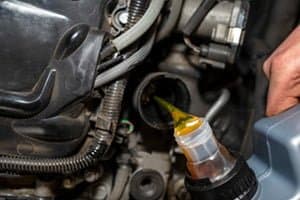
- If your car doesn’t show signs of significant damage, then you may drain the excess oil and continue using the vehicle as normal.
- If your car does have signs of severe damage, then you will probably have to take your car to a mechanic. Or, if you have the tools and skills, you could service your car on your own.
In this post, GarageChief.com won’t be giving you advice on how to repair your car in case of damage. Either take the vehicle to a mechanic or do some more research if you are willing to DIY your way out of the issue (it’s a complex repair)
How To Drain Excess Oil From Your Car
Hopefully, your car doesn’t have any serious damage and can be fixed with a simple oil drain. Below, we’ll talk about 3 ways to have excess oil drained from your car engine.
The pan drain method
The pan drain method is a rather simple method that is used by most people when facing engine oil overfill. With that said, it requires some tools:
- A car jack and jack stands to elevate the vehicle to allow for convenient drainage
- A drainage pan to collect excess oil.
- Wrench for the drain plug.
- Safety glasses and gloves to protect you from splashes.
Most people will have these tools, except for maybe the jack stands. Most car owners will have a jack, but it is not sufficient to ensure your safety while you are servicing your car from underneath.
So if you do not have jack stands, then don’t attempt to drain your oil, unless you have a vehicle pit in your garage.
But if you have all the tools for this method, then here’s how to do it:
- Find out where the drain plug of your vehicle is. Typically, it is positioned at the lowest point of your oil pan. The oil pan itself is attached to the bottom of your engine.
- Ensure that the engine is cool. The car should be cooled off for at least an hour before oil drainage. You may get burns otherwise.
- Lift your car with a car jack and slide jack stands underneath. Alternatively, position your car over a vehicle pit so that you can easily access the drain plug.
- Place the drain pan beneath the drain plug.
- Carefully loosen the plug with a wrench. Do so very slowly because you want to open the plug just enough to let oil out. If you loosen the plug too much, you’ll have to deal with an oily mess after you are done.
- Once you feel enough oil has left the oil pan, retighten the oil plug.
- Check the oil dipstick. Take it out, wipe it clean, put it back into the oil pan for a few seconds, and then take a look at it again.
- If you can see the fill line on the dipstick, then you’ve drained enough oil to resolve the issue.
- If you cannot see the fill line, then drain some more oil and repeat steps 6 and 7.
Don’t drain too much oil before checking the dipstick – you don’t want to be wasting any of it. If you have time, then you may drain little oil at a time to hopefully drain only as much as necessary to bring its level down to normal.
The pump method
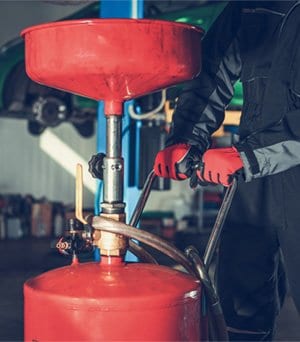
- An extractor oil pump.
- A rag or towel.
- A clear container.
And here’s how to remove excess oil with a pump:
- Again, allow your car to cool down for at least an hour after driving.
- Open the hood of your car and remove the dipstick from the oil pan. Put the dipstick on a rag.
- Prepare your extractor, its tubes, and the drainage container as per the manual.
- Insert the extractor’s suction tip into the dipstick tube. Switch the extractor on.
- Keep an eye on the container where the removed oil is deposited. Once you feel that enough oil has been removed, switch the extractor off.
- Wipe the dipstick clean, insert it into its tube, take it out, and check if you can see the fill line. If you can, then your job is one – otherwise, repeat steps 4 and 5.
- Like it was with the pan method, you don’t want to remove too much oil from the pan. If your time allows it, remove as little oil as you can during a single pass.
By the way, if you don’t have a pump, don’t attempt to drain oil with a vacuum, even if it is a durable shop vac. The motor oil will most likely damage the vac – even if not, a vacuum will suck oil out much slower than a pump.
Do not attempt to siphon excess oil out as well. If motor oil is aspirated into your lungs, you may develop lung inflammation.
Besides, used motor oil that has been heated by the motor will have toxic chemicals in it.
Have a mechanic drain the oil for you
If you aren’t comfortable with fiddling with your car, then you may want to entrust oil drainage to a skilled mechanic. Apart from that, this will probably be the more cost-effective option if you don’t have any tools.
If you don’t already have car jacks, stands, or an oil extractor, then you probably don’t really need them for car maintenance.
Furthermore, it would probably be a waste to buy them just to remove excess oil.
It’s difficult to tell how much an oil drainage will cost though – some may be willing to do it for free, while others may charge $20-$30. The procedure isn’t much different from changing the oil so it shouldn’t be more expensive for sure as changing oil takes longer.
It’s always best to ask a local mechanic about pricing to know for sure.
This video can be helpful as well.
Overfilling Engine Oil – Final Words
Overfilling engine oil is a serious issue that should be dealt with immediately. Apart from draining oil, also try to determine whether there is any damage to your car’s engine. If there is, then take your car to a mechanic – inaction will only make matters worse as too much oil in a car engine definitely can potentially be harmful and dangerous.
Disclaimers
All product names, logos, and brands are property of their respective owners. All company, product and service names used in this website are for identification purposes only. Use of these names, logos, and brands does not imply endorsement.
It is our policy to make every effort to respect the copyrights of outside parties. If you believe that your copyright has been misused, please provide us with a message stating your position and we will endeavor to correct any misuse immediately.
Some of the links in this post are affiliate links. As an Amazon Associate, we earn from qualifying purchases. This means if you click on the link and purchase the item, we may receive an affiliate commission, at no extra cost to you. This helps us keep this website alive. Read more in our affiliate policy.
